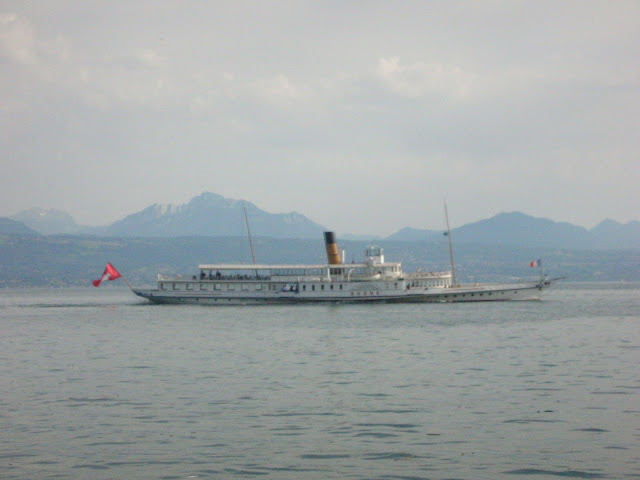Night Time Is The Right Time
at 51 Cornmarket!
 |
| French Toast for dessert. Oh La La! |
You know nighttime is the right time
To be with the one to you love..
Eating the food you love
After a fine evening meal at 51 Cornmarket Street last Friday, we two happy punters were strolling down a crowded Pana. No evening sun, but the feel good factor seemed all around us. There was loud music playing. Very loud. Then I spotted an adult guy slowly pushing a buggy, with a child (about 2-years old) in the seat. And I realised the music was coming from a boombox in the undercarriage, Muddy Waters himself belting out Mannish Boy as we passed the Pav.
 |
| Fried Courgette Flowers, Ricotta, Green Mayonnaise & Tomato |
No blues on this night though after that righteous feed from David and Anne at 51. Having established an excellent reputation with their lovely inventive lunches (and brunches) over the past couple of years, the duo aren’t content to sit on their laurels and have switched to the evening, challenging themselves and reaching higher to where they want to be and, if the past month is anything to go by, bringing their customers with them and indeed gaining quite a more admirers for their style.
 |
| Carpaccio |
And if you become a regular here, you won’t be bored. The menu is changed every few days, depending on what is fresh in the market and what is in season plus the surprises the growers and other producers come up with from time to time. The wine list is short but very well chosen, along organic and natural lines.
 |
| Super chips |
I mentioned the courgette flowers and they featured in one of our main plates: Fried Courgette Flowers, Ricotta, Green Mayonnaise & Tomato (16.50), full of colour and flavour and totally delicious. A different kind of texture in our other mains: Beef Carpaccio, Parmesan, Egg Yolk, Organic Rocket (15.50). 51 are noted for their use of eggs and the yolk was put to good use here, adding moisture and flavour, almost like a sauce, in another superb ensemble.
 |
| Yellow Courgette |
My red, Cuvée Cantalouette by Tour des Gendres, is one I had come across before via Le Caveau. It’s a Malbec/Merlot led blend from Bergerac. The fresh fruit flavours are intense and there’s a touch of gentle spice too. Tannins have a tender grip and this is an easy-drinking soft and balanced wine with good length. Really gorgeous, well made (typical of Tours des Gendres).
We had begun the evening, after a warm welcome, with two of the snacks (6.50 each). The Yellow Courgette, Garlic, Creamed Cheese & Mint Crostini and the Anchovy & Chickpea Crostini were easily shared and each got the thumbs up!
 |
| #51 |
The meal finished with another big sweet thumbs up. In the past few weeks, we’ve had French Toast at breakfast, at lunch, and we made it a hat trick at 51 when we had it as dessert. The menu description is French Toast, Rum Butterscotch & Vanilla Ice cream.
No wonder we felt real good as we said our goodbyes and headed out into Cornmarket Street past the diners and drinkers enjoying the outdoors by Benny McCabe’s establishments, along with the Cornstore, the Roundy and more. Nighttime is the Right Time as Ray Charles sang back in the day.
And then we were into a busy Patrick Street and, from the base of a buggy, the blues shouts of Muddy Waters. As another bluesman, John Lee Hooker, might say: Boom. Boom. Boom. Boom. …I like it like that.
- Restaurants who support local matter and should be supported. Just consider this list of suppliers to 51, all real people - note those first names:
- William at Caherbeg Pork, Rosscarbery
- Tim at McCarthy's Butchers, Kanturk
- Helena at Skeaghanore Farm, Ballydehob
- Adrian at Ballycotton Seafood, East Cork
- Ted at Gulfstream Fish, Kenmare
- Jamie at Haven Shellfish, Oysterhaven
- Paddy at Kilbrack Farm, Doneraile
- Malachy at Annabella Farms, Mallow
- Brian at Cork Roof Top Farm, Coal Quay
- Tom at O'Briens Eggs, Whitechurch
- Ger at Olives West Cork
- Brian at Brian's Wine, Cork
- Colm at Le Caveau Wines, Kilkenny
- Barry at Killahora Orchards, Glounthaune
- Fionnuala at Wines Direct, Westmeath
And here’s why Anne and David support local:
"Our ethos is simple. Seasonal local food served with the utmost respect and appreciation for where it came from. We cook from the heart and entirely from scratch in our kitchen at the back. Our suppliers are very close to our core and we know you'll enjoy their treasure as much as we do”.
Anne & David

















